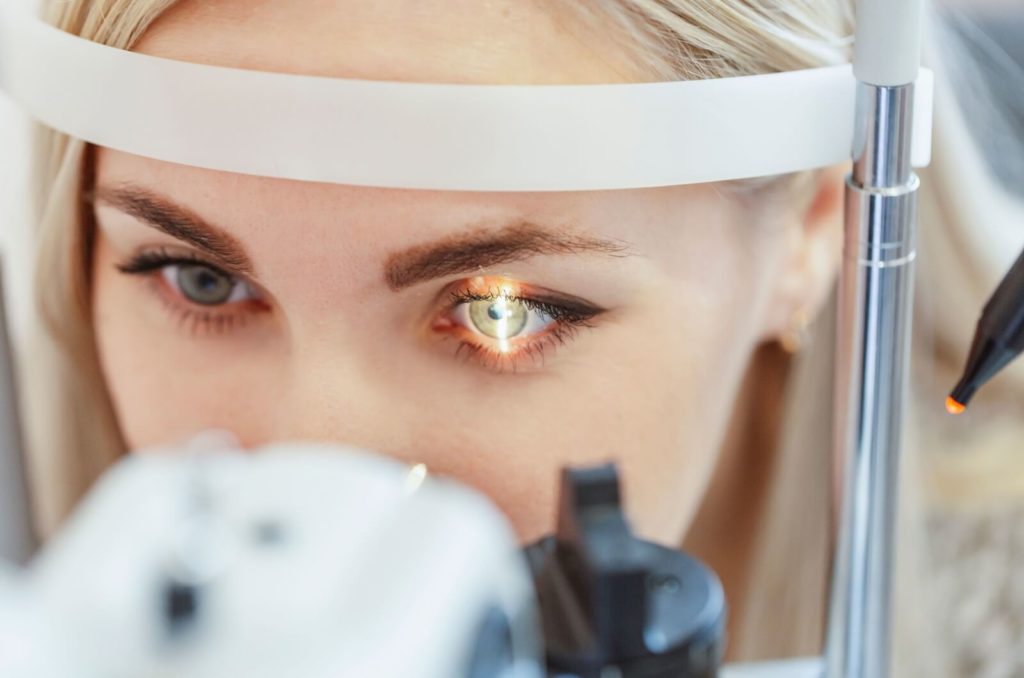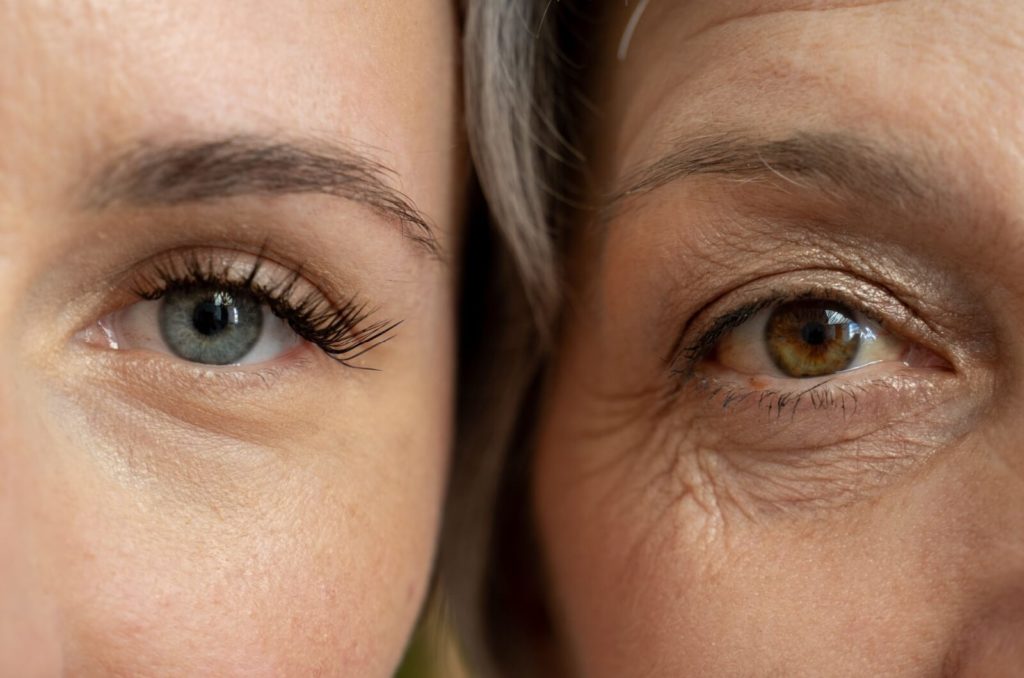Since other parts of our body, like our skin and bones, undergo changes over time, some people assume that our eyes also keep growing. However, while certain aspects of our eyes, such as the lens, can change in size and shape due to factors like age and health, the fundamental structure of the eye does not continue to grow significantly after early childhood.
Routine eye exams check for changes in eye health. Understanding the true nature of eye development can help dispel myths and promote better eye health awareness throughout our lives.
The Anatomy of the Eye
Our eyes are made up of several different parts, including the cornea, iris, pupil, lens, and retina. The size and shape of these structures play a crucial role in how well we can see.
- The cornea is a clear, dome-shaped structure located at the front of the eye. It helps focus light and protect the inner parts of the eye.
- The iris is the colored part of our eye that controls how much light enters through the pupil.
- The pupil is the black circular opening in the center of our iris. Its size can change based on how much light is needed for optimal vision.
- The lens is similar to a camera lens, adjusting its shape to help properly focus light onto the retina.
- The retina is a thin layer of tissue at the back of our eye that converts light into electrical signals that are sent to our brain, allowing us to see.
The Growth of the Eye
During childhood, our eyes experience rapid growth and development. For example, at birth, a baby’s eyes are about 75% the size of an adult’s eye. By age 2 or 3, they have reached their full size. This growth is mostly due to changes in the shape and length of the eyeball itself, as well as the development of new cells within the eye structures.
After early childhood, however, our eyes do not continue to grow significantly in size. In fact, studies have shown that by adulthood, there may only be slight changes in eye size due to factors like weight gain and loss around the eye area.
Changes in Vision
Our eyes undergo natural changes over time that can affect our vision.
As we age, the lenses of our eyes also begin to cloud and obstruct our vision. Cataracts are often age-related, and it is estimated that over half of Americans age 80 or older have cataracts or have had cataract surgery to remove the clouded lens.
These changes are often a normal part of the aging process and may include:
- Presbyopia: This is the gradual loss of ability to focus on nearby objects, generally starting around age 40.
- Reduced pupil size: As we get older, our pupils tend to become smaller, which can lead to decreased light entering the eye and reduced visual acuity.
- Decreased color perception: As we age, our eyes may have a harder time distinguishing between different colors.
The cells in our retina may also start to thin or degenerate as we age, but this is often a serious concern and requires medical attention. Retinal thinning can lead to vision problems like macular degeneration or retinal detachment. Routine eye exams help detect these issues early and allow for timely intervention.
Does Myopia Worsen Over Time?
Myopia can also continue to progress while we age. Since myopia is not reversible, the eye can continue to elongate and cause blurry distant vision. Myopia can increase the risk of other eye conditions later in life, such as retinal detachment and glaucoma.
Early intervention and myopia control can help slow down myopia progression in children and reduce the risk of developing future eye concerns.
Taking Care of Our Eyes
To maintain good vision throughout our lives, it’s important to take care of our eyes. This includes:
- Getting regular eye exams: Even if we don’t have any current vision problems, it’s still important to get regular eye exams to check for any changes or potential issues.
- Protecting our eyes from UV rays: Wearing sunglasses with 100% UV protection can help prevent damage to our eyes from the sun’s rays.
- Eating a healthy diet: Foods rich in vitamins and minerals like lutein, omega-3 fatty acids, and zinc can support eye health and help prevent age-related vision problems.
- Giving our eyes a break: Spending extended periods of time looking at digital screens can strain our eyes, so it’s important to take breaks and practice eye exercises throughout the day.
Seeking Appropriate Treatment

If you notice any changes in your vision, it’s important to seek appropriate treatment. This may include getting prescription glasses or contacts for presbyopia, undergoing cataract surgery if necessary, or using low-vision aids to help with color perception.
It’s also important to regularly visit an eye doctor and discuss any concerns or changes in vision that you may be experiencing.
Protect Your Vision at Total Vision Rancho Bernardo
By taking care of our eyes and staying attentive to potential changes in our vision, we can maintain good eye health as we age. Regular eye check-ups are essential, as they allow for early detection of any issues such as cataracts or glaucoma, which can significantly impact our quality of life.Total Vision Rancho Bernardo offers comprehensive eye exams, contact lens fittings, and treatment for various concerns to help safeguard your vision and eye health. Schedule an eye exam with Total Vision Rancho Bernardo today.



